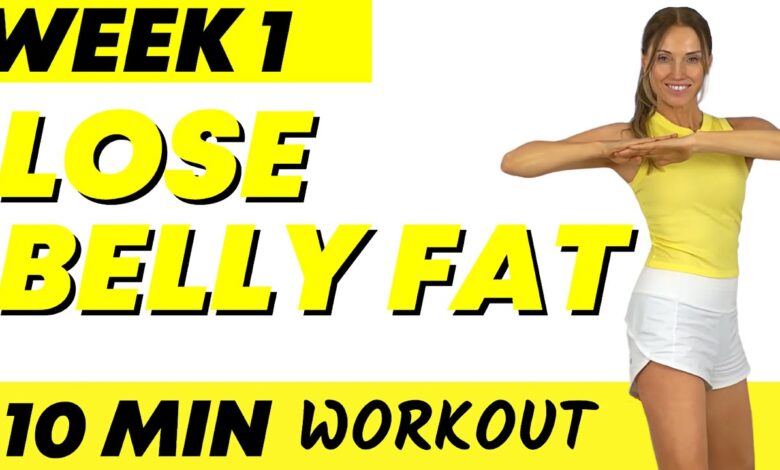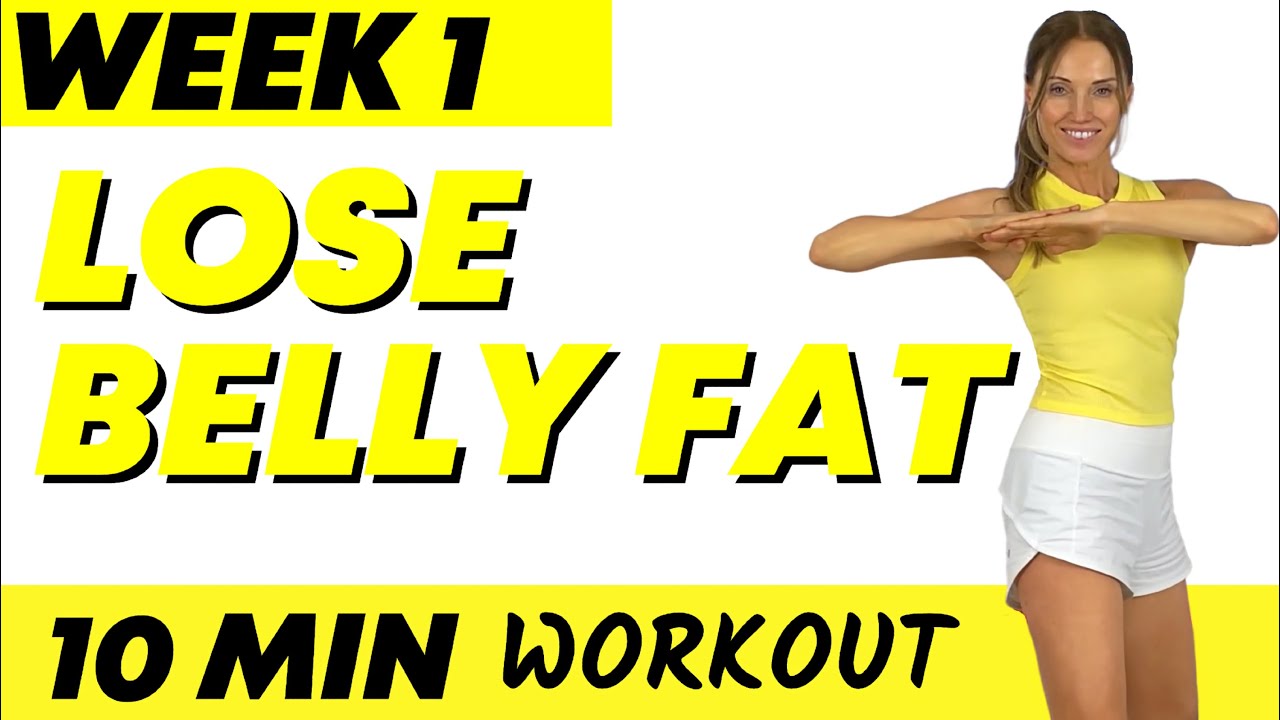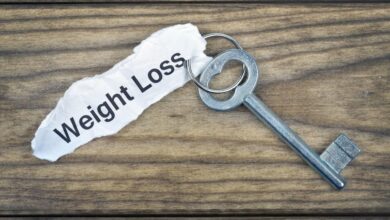
Walk in the Fat Burning Zone to Blast Belly Fat
Walk in the fat burning zone to blast belly fat – it sounds like a fitness mantra, right? And it is, but it’s also a scientifically backed approach to shedding those stubborn pounds, especially around your midsection. This zone, determined by your heart rate, is where your body prioritizes burning fat for fuel, making it a powerful tool for weight loss and overall health improvement.
Imagine this: you’re walking at a pace that’s challenging but not exhausting, your breath is slightly heavier, and you feel a comfortable warmth in your muscles. This is the sweet spot where your body is efficiently burning fat, and it’s a zone you can easily achieve with a little guidance and a consistent walking routine.
Understanding the Fat Burning Zone
The fat burning zone, often referred to as the “fat-burning heart rate zone,” is a specific range of heart rate that is believed to be optimal for burning fat during exercise. It’s not a magical zone that instantly melts away fat, but it represents a range where your body is more likely to use stored fat as fuel compared to other energy sources.
Heart Rate and Fat Burning
The intensity of your workout directly affects the fuel your body uses for energy. At low intensities, your body primarily relies on fat for fuel. As you increase the intensity, your body gradually shifts towards using more carbohydrates. The fat burning zone falls within this transition zone, where your body is still primarily using fat as fuel, but you’re also pushing yourself hard enough to burn a significant amount of calories.
Heart Rate Percentages for Different Age Groups
To find your fat burning zone, you need to calculate your maximum heart rate (MHR) and then determine the range that falls within the fat burning zone. The general formula for calculating MHR is 220 minus your age. However, this is just an estimate, and your actual MHR might be slightly different.
- Age Group:20-29 years
- MHR:190-200 bpm
- Fat Burning Zone:55-70% of MHR (104.5-140 bpm)
- Age Group:30-39 years
- MHR:180-190 bpm
- Fat Burning Zone:55-70% of MHR (99-133 bpm)
- Age Group:40-49 years
- MHR:170-180 bpm
- Fat Burning Zone:55-70% of MHR (93.5-126 bpm)
- Age Group:50-59 years
- MHR:160-170 bpm
- Fat Burning Zone:55-70% of MHR (88-119 bpm)
- Age Group:60+ years
- MHR:150-160 bpm
- Fat Burning Zone:55-70% of MHR (82.5-112 bpm)
Note:These are just general guidelines. Your individual fat burning zone may vary depending on your fitness level, genetics, and other factors.
Benefits of Walking in the Fat Burning Zone
Walking in the fat burning zone is a highly effective way to shed pounds and improve overall health. It’s a sweet spot where your body prioritizes burning fat for fuel, making it a powerful tool for weight management, especially for tackling stubborn belly fat.
Benefits for Weight Loss
Walking in the fat burning zone can be a game-changer for weight loss, particularly for targeting belly fat. This is because when you walk at a moderate intensity, your body starts using stored fat as its primary energy source.
Walking in the fat-burning zone is a great way to blast belly fat, but fueling your body with the right foods is just as important. When it comes to veggies, you might be wondering if raw or cooked is better for your health.
Check out this article about whats healthier raw or cooked veggies to make the most informed choice for your fitness journey. Once you’ve got your veggie strategy down, you can really focus on those fat-burning walks and see results.
- Increased Fat Burning:Walking in the fat burning zone triggers your body to burn more fat for energy than at lower intensities. This is due to the increased demand for oxygen, leading to the breakdown of stored fat.
- Belly Fat Reduction:Studies show that regular moderate-intensity exercise, including walking, can significantly reduce visceral fat, the harmful type of fat stored around your organs. This type of fat is strongly linked to health problems like heart disease and type 2 diabetes.
- Calorie Expenditure:Walking in the fat burning zone burns more calories than walking at a leisurely pace. This helps create a calorie deficit, which is crucial for weight loss.
Benefits for Cardiovascular Health
Walking in the fat burning zone is a fantastic way to boost your heart health and improve your endurance. It helps strengthen your heart muscle, improve blood circulation, and lower your risk of cardiovascular disease.
- Improved Cardiovascular Fitness:Walking in the fat burning zone strengthens your heart muscle, making it more efficient at pumping blood throughout your body. This translates to improved cardiovascular fitness and a lower risk of heart disease.
- Reduced Blood Pressure:Regular moderate-intensity exercise, like walking in the fat burning zone, can help lower both systolic and diastolic blood pressure. This is because it improves blood flow and reduces stress on the cardiovascular system.
- Increased Endurance:Walking in the fat burning zone helps build endurance. You’ll notice that you can walk for longer periods without getting tired. This translates to greater fitness levels and the ability to enjoy more active pursuits.
Benefits for Mental Well-being
Walking in the fat burning zone can be a powerful tool for improving mental well-being and reducing stress.
Walking in the fat-burning zone is a great way to torch belly fat, but it’s something many of us struggled with during the pandemic. The lockdowns and social distancing measures forced us to change our routines, and for many, that meant less exercise and more time indoors.
How COVID-19 affected our health and fitness habits is a topic that has been widely discussed, and it’s clear that many of us need to get back on track. But getting back to that fat-burning zone doesn’t have to be a chore.
Start with short walks and gradually increase your duration and intensity. You’ll be surprised how quickly you can get back into the groove and see those results.
- Stress Reduction:Exercise releases endorphins, which have mood-boosting effects and help reduce stress levels. Walking in the fat burning zone provides a great way to release stress and feel more relaxed.
- Improved Mood:Regular exercise has been shown to improve mood and reduce symptoms of anxiety and depression. Walking in the fat burning zone can help you feel more energized and positive.
- Increased Self-Esteem:Achieving fitness goals through walking can boost your self-esteem and confidence. Seeing yourself progress and become more physically fit can have a positive impact on your overall sense of well-being.
Designing a Walking Workout for Fat Burning
Designing a walking workout routine that incorporates walking in the fat burning zone is crucial for achieving your weight loss goals. A well-structured workout plan ensures you maximize your efforts and stay motivated.
Sample Walking Workout Routine, Walk in the fat burning zone to blast belly fat
This sample routine is designed for beginners and can be adjusted based on your fitness level and goals. It incorporates walking in the fat burning zone for 30 minutes, with intervals of brisk walking to increase intensity.
- Warm-up (5 minutes):Begin with a gentle walk at a comfortable pace to prepare your body for the workout. This helps to increase blood flow and reduce the risk of injury.
- Fat Burning Zone Walking (20 minutes):Walk at a moderate pace, maintaining a heart rate within your fat burning zone. This should feel like a comfortable challenge, where you can still hold a conversation.
- Brisk Walking Intervals (5 minutes):Increase your pace for 1-2 minutes, pushing yourself to a slightly higher intensity. This helps to elevate your heart rate and burn more calories.
- Cool-down (5 minutes):Gradually slow down your pace and end with a gentle walk to allow your body to recover. This helps to prevent muscle soreness and promote relaxation.
Calculating Target Heart Rate
Determining your target heart rate is essential for maximizing fat burning during your walking workout. It’s calculated based on your maximum heart rate, which is typically estimated by subtracting your age from 220.
Walking in the fat-burning zone is a great way to blast belly fat, but fueling your body with the right foods is just as important. To ensure you’re getting the nutrients you need to support your fitness goals, check out this article on 5 ways to up your vegetable game.
A healthy diet packed with vegetables will give you the energy you need to power through those intense workouts and help you achieve your weight loss goals.
Your target heart rate for fat burning is generally between 50% and 70% of your maximum heart rate.
For example, if you are 30 years old, your maximum heart rate is 190 (22030). Your target heart rate for fat burning would be between 95 (50% of 190) and 133 (70% of 190) beats per minute.
Monitoring Progress
Regularly monitoring your progress is crucial for staying motivated and ensuring your workout is effective. You can track your progress by:
- Tracking your weight:Weigh yourself weekly to monitor your overall weight loss.
- Measuring your body fat percentage:This can provide a more accurate indication of fat loss than weight alone.
- Recording your walking distance and duration:This helps you track your progress and identify areas for improvement.
Maintaining Motivation and Consistency
Maintaining motivation and consistency with your walking routine is essential for long-term success. Here are some strategies to help you stay on track:
- Set realistic goals:Start with achievable goals and gradually increase your intensity and duration as you progress.
- Find a walking buddy:Having a walking partner can provide support and motivation, making it more enjoyable.
- Make it a habit:Schedule walking into your daily routine and stick to it as much as possible.
- Reward yourself:Celebrate your milestones and achievements with small rewards to stay motivated.
Enhancing Fat Burning with Diet and Lifestyle

Walking in the fat burning zone is an effective strategy for shedding pounds, but maximizing its impact requires a holistic approach that encompasses diet and lifestyle modifications. Just like a car needs the right fuel to run efficiently, your body needs the right nutrients to support fat burning and overall well-being.
Balanced Diet for Fat Burning
A balanced diet plays a crucial role in supporting fat burning during walking workouts. When you eat a nutritious diet, your body has the energy it needs to fuel your walks and recover effectively. This also helps to regulate your metabolism and enhance your body’s ability to burn fat.
- Prioritize Nutrient-Rich Foods:Include plenty of fruits, vegetables, lean protein, and whole grains in your diet. These foods provide essential vitamins, minerals, and fiber that support your body’s functions and help you feel full and satisfied.
- Limit Processed Foods:Processed foods are often high in calories, unhealthy fats, added sugars, and sodium, which can hinder your weight loss efforts. Minimize your intake of these foods and opt for whole, unprocessed options instead.
Importance of Sleep, Hydration, and Stress Management
Adequate sleep, hydration, and stress management are essential for optimal fat burning and overall health.
- Sleep:When you sleep, your body repairs and rebuilds muscle tissue, regulates hormones, and burns calories. Aim for 7-9 hours of quality sleep each night.
- Hydration:Water is essential for many bodily functions, including metabolism and fat burning. Stay hydrated throughout the day by drinking plenty of water, especially before, during, and after your walks.
- Stress Management:Chronic stress can lead to weight gain and hinder fat burning. Practice stress-reducing techniques such as yoga, meditation, or deep breathing exercises to manage stress levels.
Measuring Progress and Staying Motivated: Walk In The Fat Burning Zone To Blast Belly Fat
Staying motivated is crucial for any fitness journey, and tracking your progress can be a powerful tool to keep you on track. By monitoring your walking workouts and observing your body’s response, you can identify areas for improvement and celebrate your achievements.
Tracking Progress
Tracking your progress allows you to see how far you’ve come and provides valuable insights into your fitness journey.
- Record Your Walks:Use a fitness tracker, a notebook, or a mobile app to record the duration, distance, pace, and calories burned for each walk. This data will help you identify patterns and trends in your progress.
- Measure Your Waist Circumference:Waist circumference is a good indicator of visceral fat, which is the dangerous type of fat stored around your internal organs. Measure your waistline regularly to monitor any changes in your belly fat.
- Take Progress Photos:Take photos of yourself at regular intervals to visually track your progress. This can be a powerful motivator, as you can see the physical changes taking place over time.
- Monitor Your Energy Levels:Pay attention to how you feel before, during, and after your walks. As you get fitter, you’ll likely notice an increase in your energy levels and a decrease in fatigue.
Staying Motivated
Staying motivated can be challenging, especially when you hit plateaus in your weight loss journey. Here are some strategies to keep you inspired:
- Set Realistic Goals:Avoid setting unrealistic goals that can lead to frustration. Start with small, achievable goals and gradually increase the intensity or duration of your walks.
- Find a Walking Buddy:Walking with a friend can make your workouts more enjoyable and help you stay accountable. You can motivate each other and keep each other on track.
- Join a Walking Group:Joining a walking group can provide a sense of community and support. You’ll be surrounded by people with similar goals, which can be highly motivating.
- Reward Your Progress:Celebrate your achievements by rewarding yourself with non-food treats, such as a new pair of walking shoes or a massage. This can help you stay motivated and reinforce your positive habits.
- Track Your Successes:Focus on the progress you’ve made, not on the setbacks. Keep a journal or a vision board to remind yourself of your accomplishments and your goals.
Overcoming Plateaus
Plateaus are a normal part of any weight loss journey. When you hit a plateau, it’s essential to adjust your approach to keep making progress.
- Increase the Intensity:Try incorporating intervals into your walks by alternating between periods of faster walking and slower walking. This can help you burn more calories and challenge your body.
- Increase the Duration:Gradually increase the duration of your walks by adding a few minutes each week. This will help you burn more calories and build endurance.
- Vary Your Walking Terrain:Walking on different terrains, such as hills or trails, can add variety to your workouts and challenge your muscles in new ways.
- Re-evaluate Your Diet:Make sure your diet supports your fitness goals. Consider consulting with a registered dietitian to create a personalized nutrition plan.
Considerations for Individual Needs
It’s crucial to remember that everyone is different, and what works for one person may not work for another. Before embarking on any new exercise program, it’s essential to consult a healthcare professional, especially if you have any underlying medical conditions.
They can assess your individual needs and help you create a safe and effective workout plan.
Individual Factors Affecting Fat Burning Zone
Several factors can influence your fat burning zone, including age, fitness level, and medical conditions. Understanding these factors can help you personalize your walking workouts to maximize fat burning.
- Age:As we age, our metabolism naturally slows down, which can affect our fat burning capabilities. Therefore, older individuals might need to adjust their walking intensity and duration to achieve their desired fat burning results.
- Fitness Level:Individuals with lower fitness levels may find it challenging to maintain a consistent pace within the fat burning zone for extended periods. They might need to start with shorter walks and gradually increase the duration and intensity as they build fitness.
- Medical Conditions:Certain medical conditions, such as diabetes, heart disease, or arthritis, can impact your ability to exercise. Consulting a healthcare professional is crucial to ensure your walking workouts are safe and appropriate for your condition.
Modifying Walking Workouts for Individual Needs
Personalizing your walking workouts is essential for achieving optimal results and maintaining motivation. You can modify various aspects of your walking routine to suit your needs and preferences.
- Intensity:You can adjust the intensity of your walks by changing your pace. Start with a brisk walk, gradually increasing the speed as you become fitter. You can also incorporate intervals, alternating between periods of higher and lower intensity.
- Duration:Begin with shorter walks and gradually increase the duration as you build endurance. Aim for at least 30 minutes of moderate-intensity walking most days of the week.
- Terrain:Walking on varied terrain can challenge your body and increase calorie burn. Try incorporating hills, stairs, or uneven surfaces into your walking route.
- Time of Day:Choose a time of day that works best for your schedule and energy levels. Some people find that walking in the morning helps boost their metabolism, while others prefer to walk in the evening after work.
Wrap-Up
Walking in the fat burning zone is a simple yet powerful strategy for achieving your weight loss goals, improving your cardiovascular health, and boosting your overall well-being. It’s a sustainable approach that can be integrated into your lifestyle, offering a gentle yet effective way to transform your body and feel your best.
So, lace up your shoes, find a scenic route, and start walking your way to a healthier, happier you!






